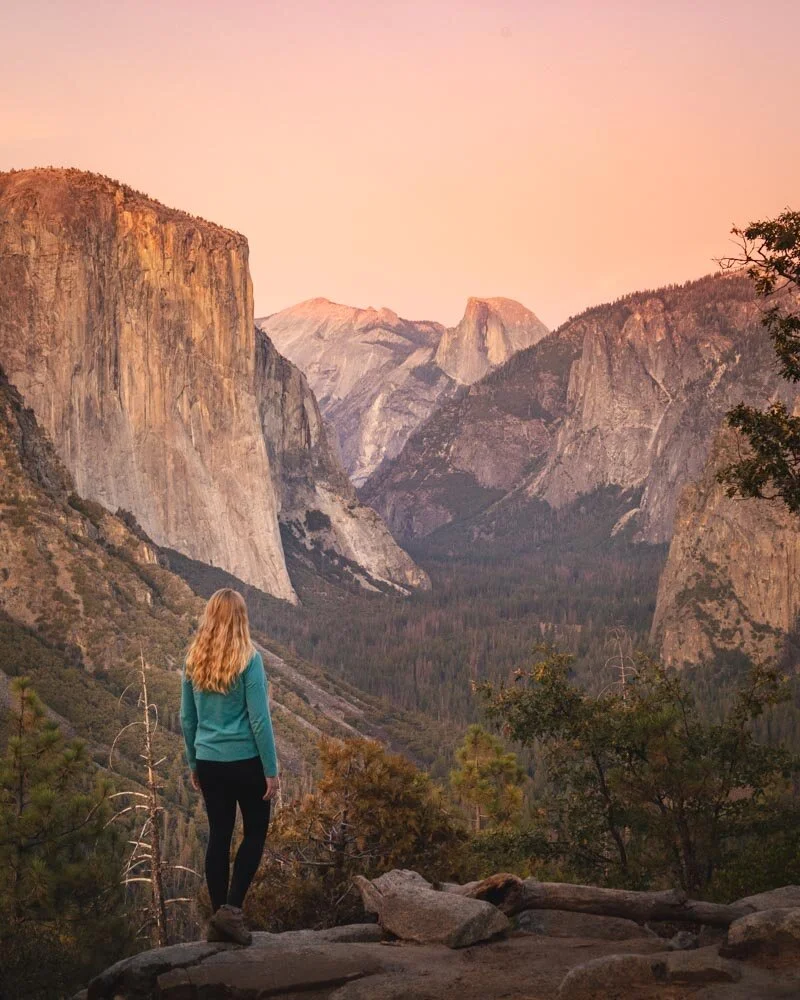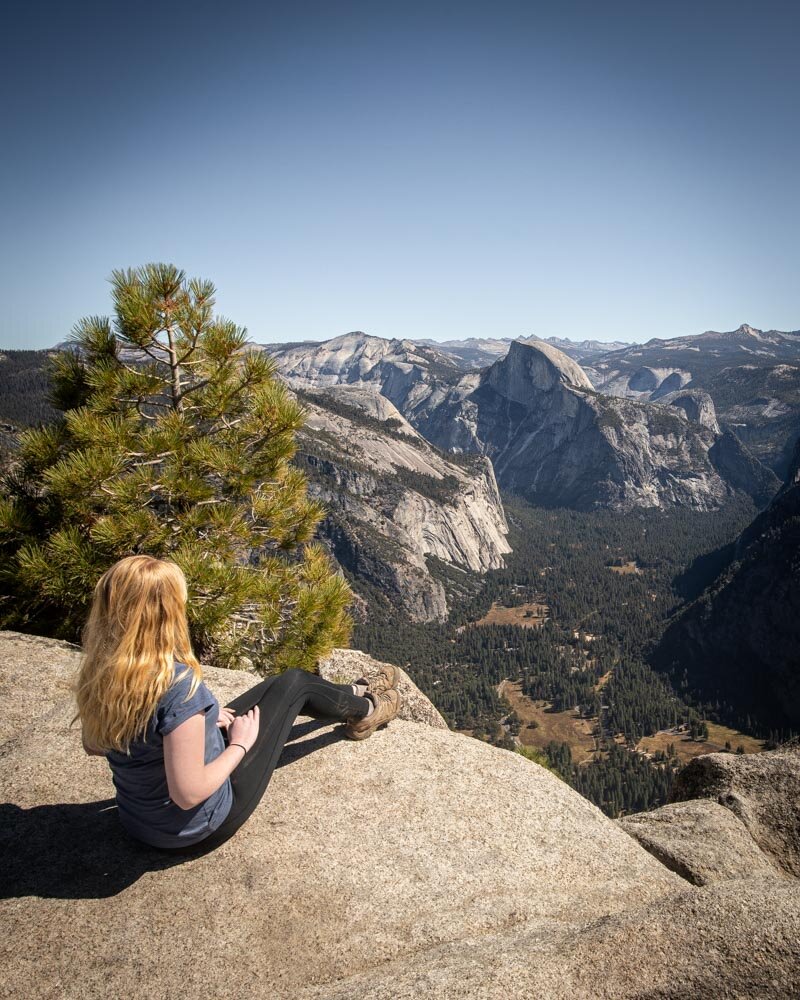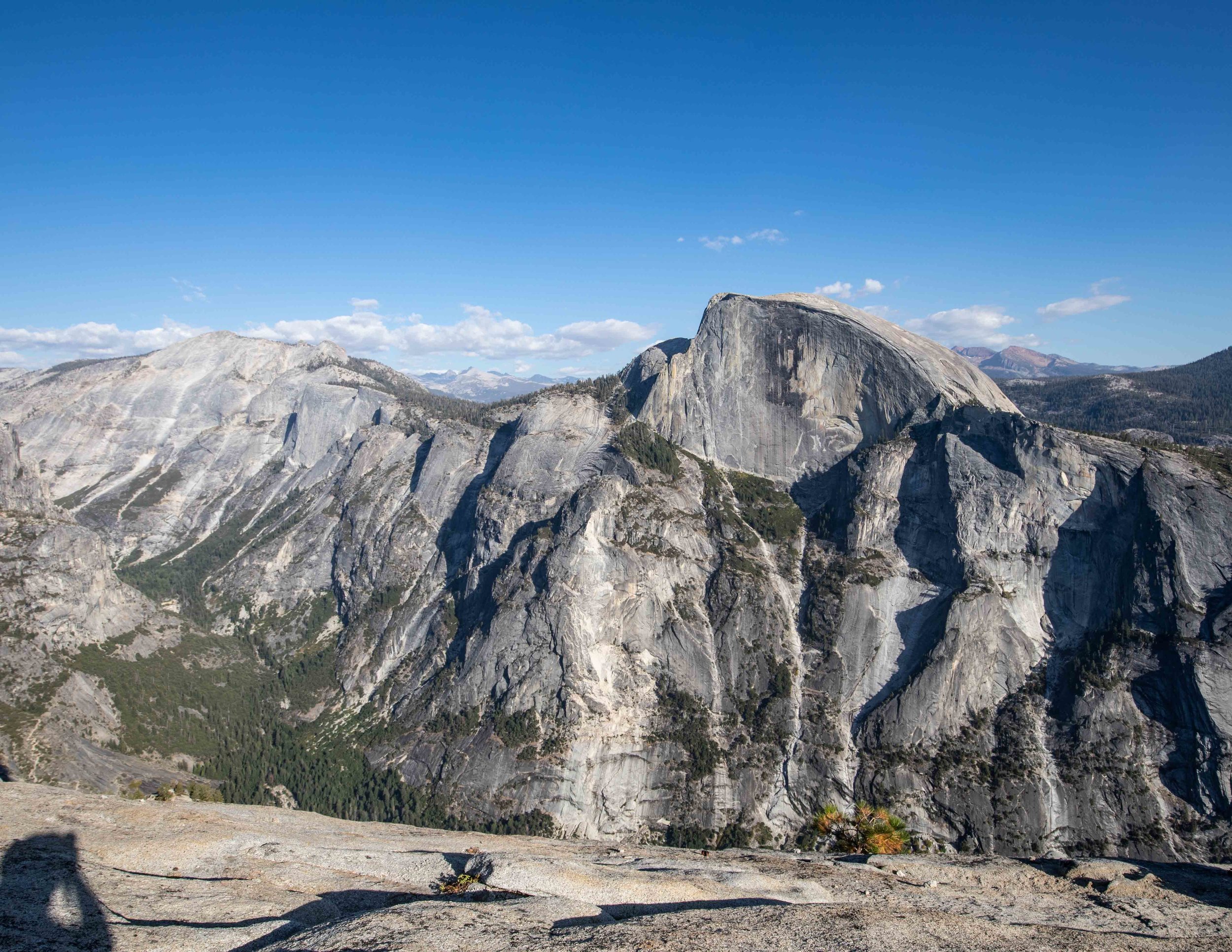We’ve visited Yosemite in both September and October and had an absolutely incredible time. There are lots of positives to visiting in this season, although don’t come expecting great fall foliage because most of the trees in Yosemite are evergreen!
There are also a few downsides to visiting in fall that we’ll take you through one by one. Of course, whether you come closer to the end of summer or towards the beginning of winter will have an impact so we’ll cover that too.
Here’s everything you need to know before planning your fall trip to Yosemite.
Pros of visiting Yosemite in the fall
There will be far fewer crowds
In terms of numbers we’ve included more cons in this post than pros, but this one pro alone is enough to outweigh all the cons put together in our opinion. Yosemite is wildly popular, so popular that it’s one of the busiest parks in the US. If you like your time in the outdoors to be quiet and peaceful then fall is a great time to visit. It becomes less busy the further through fall you get, we think October is the sweet spot between lower visitor numbers and everything still being open.
We’d heard so much about the huge crowds at Yosemite before our visit and we were thrilled to find that we could get some incredible spots to ourselves - even gorgeous sunset spots like Inspiration Point and the summits of both the El Capitan and North Dome hikes. On other trails we weren’t alone but we also weren’t crowded, we always had loads of space to find our own quiet spot to sit and take in the majesty of one of our favourite national parks in the world.
We still found there was often really lengthy queues for the restaurants though, so I could only imagine how bad that could be in summer!
Of course if you visit in winter you would find even less people but you would be severely limited in what you can do, in fall you won’t have that issue (although it slightly comes into play towards the end of the season which we’ll discuss later).
The weather is great for hiking
The weather in fall is generally quite stable and that was a major plus for us because we planned to take on some of the bigger hikes in the park which require good conditions. Summer can bring both storms and some seriously hot days, neither of which make for great hiking conditions. Many of Yosemite’s best hiking trails are quite exposed to the elements so on a scorching hot day you are going to have to work much harder and carry much more water with you.
During our 10 days in Yosemite we didn’t have a single drop of rain - of course this might not always be the case but we were tracking the weather for a while before and after our trip and it was pretty fantastic throughout. Temperatures in the day time were generally gorgeous, we had the odd very hot day in the mid 80’s F (29C) but most were in the lows 70s F, I think it made a huge difference to how hard we found some of the trails.
You’ll be able to park at trail heads and viewpoints
If you have just a few days in the park and you’re the kind of person that likes to pack a lot into your time then being able to park at trail heads and viewpoints will allow you to see so much more. In the peak season managing to get a parking spot at one of the trail heads or major viewpoints is going to be far more unlikely.
Yosemite does have a great shuttle service but as soon as you add in queues to get on and lots of stops you just can’t see as much in a day. Even though we weren’t pushed for time on our visit, being able to park wherever we wanted without queueing meant we saw pretty much everything that we had hoped to.
It is possible to get accommodation close to the park without booking so far in advance and it will be cheaper
If you’re camping this won’t be an issue because even in fall you have to book long in advance. For lodges inside Yosemite itself you’ll have great availability in fall but prices don’t drop.
However, around the park it’s a different story and you will get both lower prices and greater availability. The further through fall you get the cheaper it becomes.
November prices will be roughly half August prices (which around Yosemite is a huge difference) but bear in mind some things will close in November. October seemed to sit roughly inbetween the two price-wise. Shop around though because some hotels were doing much better deals than others.
It’s much easier to get Half Dome permits
All Half Dome permits are granted on a lottery based system, but before you go thinking it’s like the Wave and you’ll never get them, it’s not! Just to be really clear so you don’t miss out though, all permits for Half Dome for the entire season must be applied for in March (they have a small number of daily lottery allowance too but these mean that you have to book your trip and turn up without knowing if you will be successful or not). For your best chance at getting them you need to know your dates way ahead of your trip. However, the good news is that in fall the number of people applying for permits per day is lower so you have a much greater chance of winning the lottery.
You can use the charts here to choose the best dates to apply for and also the days of the week with the lowest applicants on average. Using this method we were successful on our first try (the same cannot be said for the Wave which we have never managed to succeed in getting!).
If you’re planning on taking on this bucket list adventure, here’s what no one tells you about hiking up Half Dome.
Cons of visiting Yosemite in the fall
The waterfalls will have virtually all run dry
For us, this was the biggest con of all, and not something we realised until we went to look for Yosemite Falls and there it stood before us, dry as a bone! Most people rate Yosemite’s waterfalls as a highlight of the whole park so this is something you really need to think about when planning your trip in fall. Not every waterfall will be dry, but every waterfall will be a shadow of its former self.
During our visit Bridal Veil, Vernal and Nevada Falls had some water. Yosemite Falls, the grandest of them all had nothing.
Where Upper Yosemite Falls should have been
If waterfalls are really important to you and tracks like the Upper Yosemite Falls hike are on your bucket list then I wouldn’t recommend visiting in fall, the best time to come is spring when they will be pumping.
In mid to late fall the Glacier Point Road and Tioga Pass Road will close
Yosemite Valley is world famous but many of our favourite spots in the park, are along the Glacier Point Road, including the Sentinel Dome trail and Taft Point which are musts for sunset! Both the Glacier Point and Tioga Pass Roads close when the snow fall becomes too great. That tends to be sometime in November.
Unfortunately this means that anytime in November you are gambling as to whether these spots will be accessible. If you gamble and win you’ll get these places almost to yourself, if you gamble and lose you miss out completely.
To give you a rough idea of what to expect, you can use the charts on this website to see when the roads have been closing over the last few decades.
Mirror Lake will have disappeared!
As with Yosemite Falls, Mirror Lake will be a mere puddle or even dried up completely like it was for us.
We’d seen so many stunning pictures of this lake over the years - it’s the one with the perfect reflection of Half Dome in it - so we were a little disappointed.
Where Mirror Lake should have been
If you’re a photography lover this will probably be more disappointing than for the average visitor.
The Mist Trail won’t have mist
So you may have already guessed it by now but if the waterfalls are running low then the famous Mist Trail will of course be mist-less! This does rather detract from the grandeur and excitement of the hike.
Normally the falls are so powerful that you’ll actually get drenched whilst on this walk, and it is supposed to be completely spectacular. We still enjoyed the hike, but there wasn’t even a hint of mist and the waterfalls no longer look dramatic.
It can get very cold at night if camping
If you’re planning to camp, which is the only way of staying in Yosemite Valley on the cheap, then be prepared for some cold nights! If you’ve got good gear this isn’t really going to be a problem, but don’t come with Walmarts finest like we did and expect to be anything other than frozen! We camped in September and it was already seriously cold, November would be pretty arctic unless you’re used to cold climes!
Incidentally if you love a good all night camp fire then you might love camping in fall, as from October the restrictions change and you can burn a fire all night long. We wondered why the second time we camped (in October) every morning started in a fug of smoke when September had been completely clear!
If you’re planning to camp, check out this guide for everything you could possibly want to know about camping in Yosemite.
You may still get some snow or ice at higher elevations
If you’re looking to hike a trail on the Tioga Pass Road such as Clouds Rest - and you should because it’s amazing! - you could face snow and ice. We had snow and ice through the whole forested section of this hike and it was the first week of October!
As time goes on or if there’s been a particularly cold snap you could face a lot more snow than we did. Having said that, depending on your opinion, you might consider this is a plus as the snow does make everything even more beautiful.
This post may contain affiliate links, meaning at no additional cost to you, that we will earn a small commission if you click through and decide to make a purchase. This helps towards the costs of running our website. Thanks for your support!
Like it? Pin it!
Follow us on Social Media
Are you planning a trip to Yosemite? Do you have any tips for visiting in the fall? Let us know in the comments below!


























